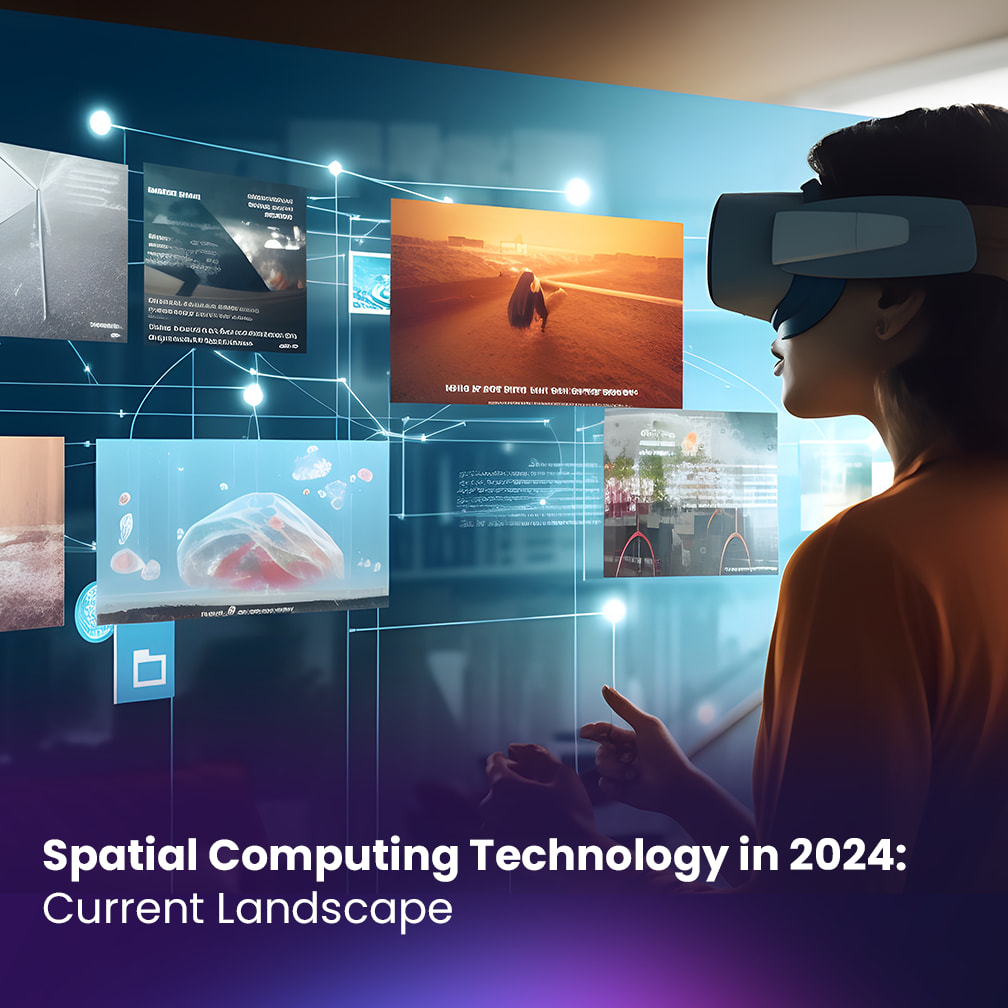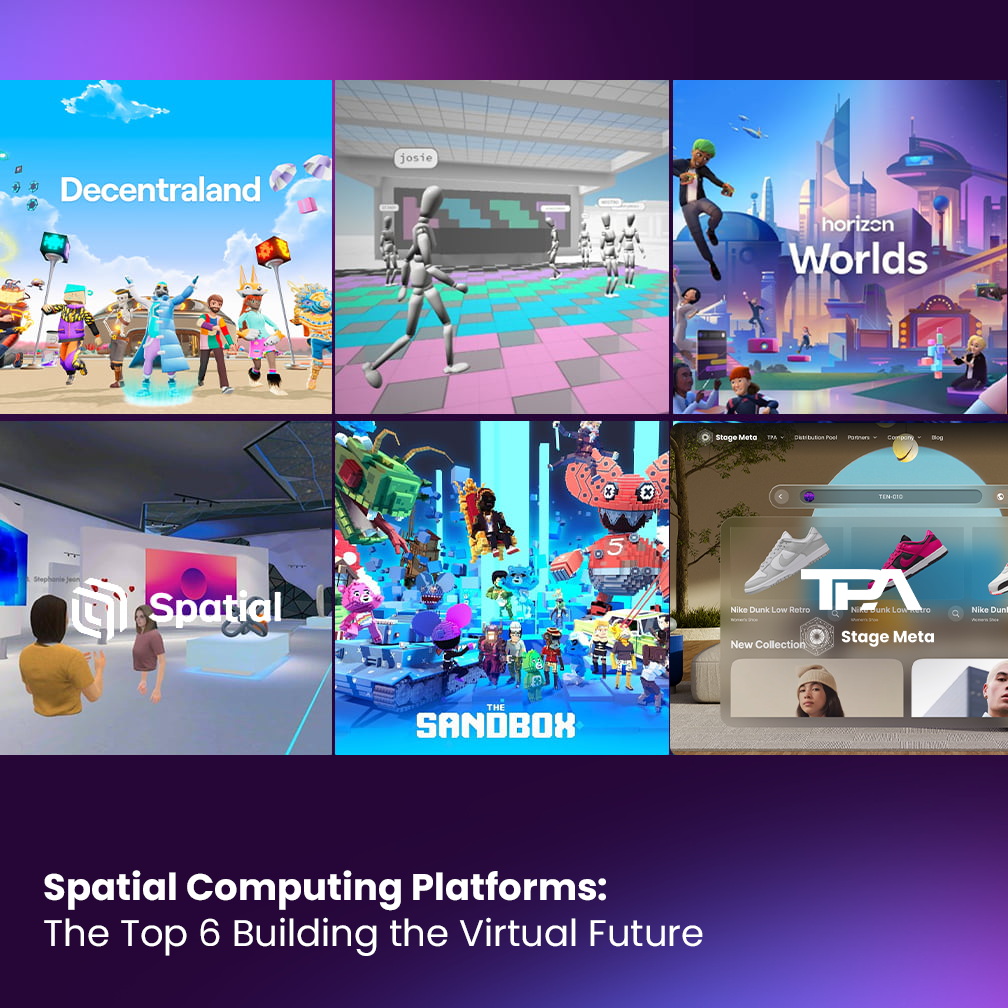
Ever imagined interacting with holograms in your living room or designing buildings in the air? That’s not science fiction anymore, folks. It’s called Spatial Computing, and it’s about to revolutionize everything from how we work to how we play.
Table of contents
But what exactly is Spatial Computing?
Imagine it as the merging of the physical and digital worlds. It’s about seamlessly integrating digital information into our real-world environment, creating immersive experiences that blur the lines between the two. Think HoloLens and Magic Leap, these headsets are just the beginning of a whole new way to interact with technology.
So, how does Spatial Computing work?
It relies on a combination of three key technologies:
- Real-time 3D tracking: Imagine sensors that can track your every movement and position in the real world. This is crucial for creating a truly immersive experience.
- Spatial mapping: This involves mapping out the physical environment, including objects and surfaces, to accurately place digital objects within it.
- Augmented reality (AR) and virtual reality (VR) technologies: These technologies overlay digital information on the real world (AR) or create completely virtual environments (VR), allowing you to interact with digital objects in a natural way.
Is Spatial Computing just for gamers?
Absolutely not! While gaming is a major driver of this technology, the potential applications are endless. Here are some areas where Spatial Computing is poised to make a big impact:
- Education: Imagine students learning about history through interactive 3D simulations or dissecting virtual frogs in anatomy class. Spatial Computing can bring lessons to life and make learning more engaging and effective.
- Design and engineering: Architects can design buildings in VR, allowing clients to walk through them before they’re even built. Engineers can use AR to visualize and troubleshoot complex machinery, saving time and money.
- Healthcare: Surgeons can rehearse delicate procedures on virtual patients, improving accuracy and reducing errors. Patients can undergo therapy in immersive virtual environments, reducing anxiety and pain.
- Manufacturing: Workers can assemble complex products using AR overlays that guide them through each step. Engineers can troubleshoot problems remotely using AR headsets, minimizing downtime.
- Retail: Imagine trying on clothes virtually before buying them or seeing how furniture would look in your home before you purchase it. This could revolutionize the shopping experience and reduce returns.
What about Apple®’s Vision Pro?
Rumors are swirling about Apple®’s potential entry into the Spatial Computing market with its highly anticipated Vision Pro headset. While details remain scant, Apple®’s history of innovation suggests that its headset could be a major game-changer.
But wait, there’s more!
The world of Spatial Computing is still in its early stages, and the possibilities are limited only by our imagination. We can expect to see even more innovative applications emerge in the years to come, transforming the way we work, learn, play, and interact with the world around us.
So, are you ready for the future? The era of Spatial Computing is here, and it’s time to get excited about the possibilities!
FAQs
Q: What are the challenges of Spatial Computing?
A: Some of the challenges include the high cost of hardware, the need for fast and reliable internet connectivity, and concerns about privacy and security.
Q: Is Spatial Computing safe?
A: As with any new technology, there are potential risks associated with Spatial Computing. However, with responsible development and use, it can be a safe and enjoyable experience.
Q: What does the future hold for Spatial Computing?
A: The future of Spatial Computing is bright! We can expect to see more affordable and accessible devices, more immersive and interactive experiences, and even more innovative applications emerge.
Conclusion
Spatial Computing is no longer just a futuristic dream. It’s a reality that is quickly changing the way we interact with the world around us. From gaming and entertainment to education and healthcare, the possibilities are endless. So, get ready to embrace the future, because Spatial Computing is here to stay!
For more information and to dive deeper into the boundless possibilities of Stage Meta and TPA, visit Stage Meta’s Homepage.
The future is now, and it awaits you.
Welcome to the new age of Spatial Computing.
Welcome to Stage Meta.









6 Comments
[…] Spatial Computing: The Future is Now? […]
[…] Spatial Computing: The Future is Now? […]
[…] Spatial Computing: The Future is Now? […]
[…] Spatial Computing: The Future is Now? […]
[…] Spatial Computing: The Future is Now? […]
[…] Spatial Computing: The Future is Now? […]